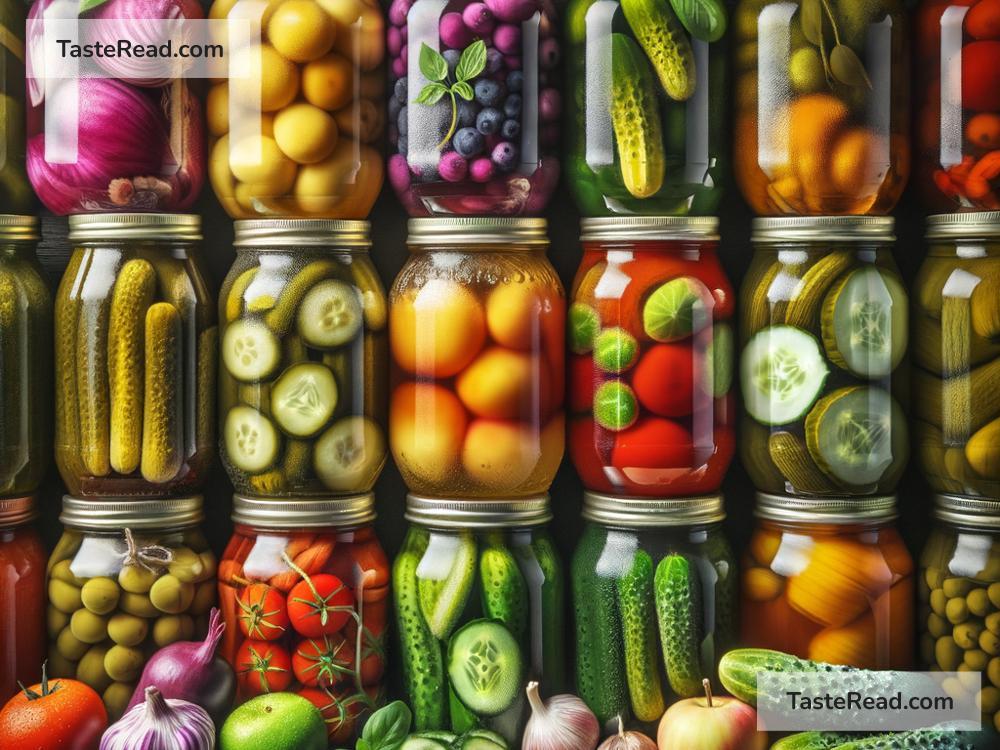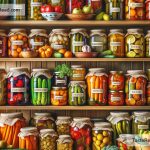Exploring the World of Pickling and Preserving: A Flavorful Journey
Have you ever bitten into a crunchy pickle and wondered about the magic behind its tangy taste? Or perhaps you’ve spread homemade jam on your morning toast, savoring the burst of fruit flavor. This magic, my friends, is the world of pickling and preserving – a delightful journey we’re about to embark on together.
Pickling and preserving are age-old techniques that have been handed down through generations. These methods were primarily used to store food for the long term, especially when fresh produce was not available. However, today, they’re celebrated not just for their practicality but for the incredible flavors they bring to our tables.
The Basics of Pickling
Pickling is a process where ingredients like vegetables, fruits, and even meats are soaked in a solution of water, vinegar, salt, and a variety of spices. This soaking process is not just for flavor; it also creates an environment where bad bacteria can’t live, making the food safe to eat for a much longer time.
There are two main types of pickles:
– Quick Pickles: These are the fastest to make, often ready in a few hours or days. They’re made by pouring a hot vinegar solution over the vegetables and refrigerating them.
– Fermented Pickles: This type takes a bit longer, as it relies on natural bacteria to create lactic acid, which pickles the food. This process can take anywhere from a few days to several weeks.
The Joy of Preserving
Preserving, on the other hand, encompasses a broader range of techniques including canning, drying, and freezing. However, one of the most beloved methods is making jams and jellies. This involves cooking fruits with sugar until they reach a thickened, spreadable consistency. Not only does it preserve the fruit, but it also concentrates their flavors into a delectable treat that can be enjoyed year-round.
Why Pickle and Preserve?
Flavor Adventure: Pickling and preserving allow you to experiment with flavors, creating combinations that can transform a dish. Imagine adding garlic and dill-flavored pickles to your sandwiches, or a spicy mango chutney to accompany your dinner.
Waste Reduction: These methods are fantastic for reducing food waste. Got too many cucumbers or strawberries? Pickle or jam them! It’s a practical, delicious way to ensure food doesn’t go to waste.
Health Benefits: Fermented pickles are rich in probiotics, which are good for your gut health. Meanwhile, preserving fruits allows you to enjoy their vitamins and minerals long after their growing season has passed.
Gift Giving: Homemade pickles and jams make heartfelt gifts that show the recipient you care enough to create something unique for them.
Getting Started
Starting your pickling and preserving journey is easier than you might think. Here’s a basic guide to set you off:
For Pickling:
1. Choose fresh, crisp vegetables or fruits. Cucumbers, carrots, and green beans are great for beginners.
2. Prepare your brine. A simple brine is a mixture of water, vinegar, salt, and your choice of spices.
3. Pack your produce into jars, pour the hot brine over them, and seal the jars. For quick pickles, place them in the refrigerator. If you’re fermenting, let them sit at room temperature for a few days to a few weeks, then refrigerate.
For Preserving:
1. Select high-quality, ripe fruits for the best flavor.
2. Prepare your jars by sterilizing them to ensure they’re germ-free.
3. Cook your fruit with sugar and lemon juice (which helps set the jam) until thickened.
4. Pour into jars, seal, and process in a water bath to make them shelf-stable.
Final Thoughts
Exploring the world of pickling and preserving can be an incredibly rewarding hobby. It’s a creative way to enhance your cooking, reduce waste, and even improve your health. So why not dive into this flavorful journey and see what delicious creations you can come up with? Who knows, you might just discover your new favorite condiment or snack. Happy pickling and preserving!


